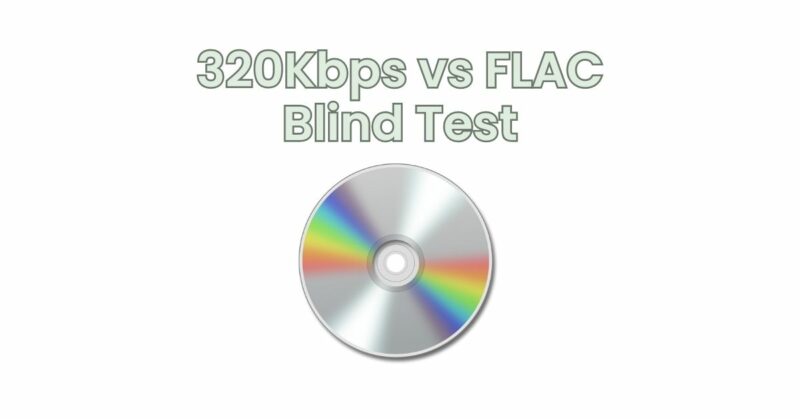When it comes to audio formats, the debate between 320kbps MP3 and FLAC (Free Lossless Audio Codec) often revolves around perceived differences in sound quality. Audiophiles and music enthusiasts have engaged in heated discussions about whether the average listener can discern the discrepancies between these two formats. In this article, we will explore the concept of a blind test, where listeners are unaware of the formats being played, and examine whether they can accurately identify the differences between 320kbps MP3 and FLAC.
Understanding 320kbps MP3 and FLAC: Before diving into the blind test, it’s essential to understand the formats being compared. 320kbps MP3 is a widely-used audio format that achieves a balance between file size and audio quality. It compresses audio data while discarding certain elements that may be less noticeable to the human ear. On the other hand, FLAC is a lossless audio format that retains all the original audio data, resulting in a more accurate reproduction of the source material.
Setting up the Blind Test: To conduct a blind test, several identical audio tracks need to be encoded in both 320kbps MP3 and FLAC formats. These tracks should cover a variety of musical genres and feature different production techniques to represent a broad range of audio characteristics. The test can be conducted in a controlled environment, ensuring consistent playback equipment and volume levels for all participants.
The Test Process: Participants in the blind test are presented with a series of audio clips without any knowledge of the formats being played. The clips are played randomly, and participants are asked to identify which format they believe is being played for each clip. It’s important to note that participants should use their personal audio equipment or headphones to ensure familiarity and comfort during the test.
Analyzing the Results: After the blind test is conducted, the results are analyzed to determine if participants were able to accurately identify the format being played. If the results indicate that participants consistently identified the formats correctly, it suggests that there are discernible differences between 320kbps MP3 and FLAC. However, if the results show no significant correlation between participants’ guesses and the actual formats, it suggests that the average listener may struggle to hear the differences between the two formats.
Factors Influencing Results: Several factors can influence the results of a blind test comparing 320kbps MP3 and FLAC. These factors include the participants’ audio equipment, listening environment, familiarity with the music, and individual hearing capabilities. Audiophiles with high-end audio equipment and trained ears might be more likely to detect subtle differences, while casual listeners using average equipment may find it challenging to distinguish between the formats.
Conclusion: The 320kbps MP3 vs. FLAC blind test aims to explore whether the average listener can accurately perceive the differences in sound quality between these formats. While some audiophiles claim to hear significant disparities, the results of blind tests often indicate that the average listener struggles to identify the formats being played. It suggests that for most people, 320kbps MP3 provides a satisfactory listening experience with a good balance between file size and audio quality. Ultimately, personal preference, equipment, and listening environment play a crucial role in determining whether one format is preferable over the other.


